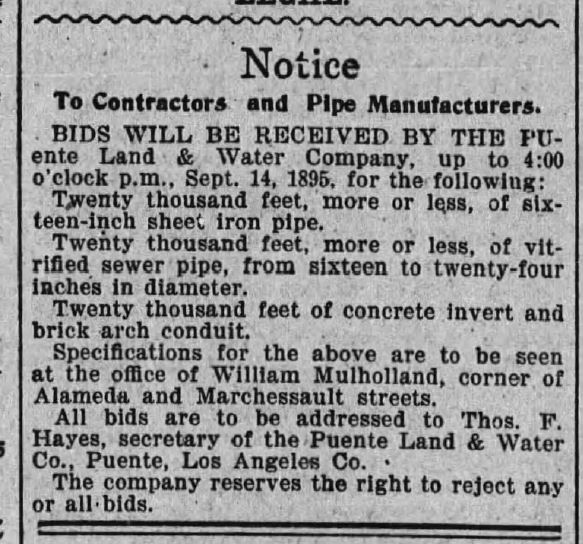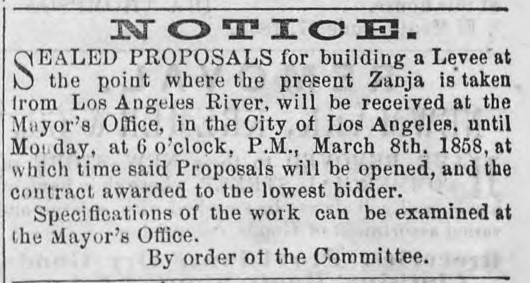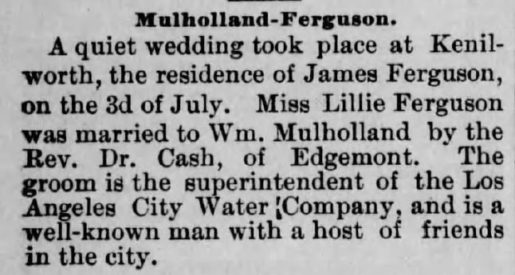“From the Owens River to Saugus to the San Fernando Valley, it’s all downhill…”
LOS ANGELES HAPPENS.
JUST ADD WATER.
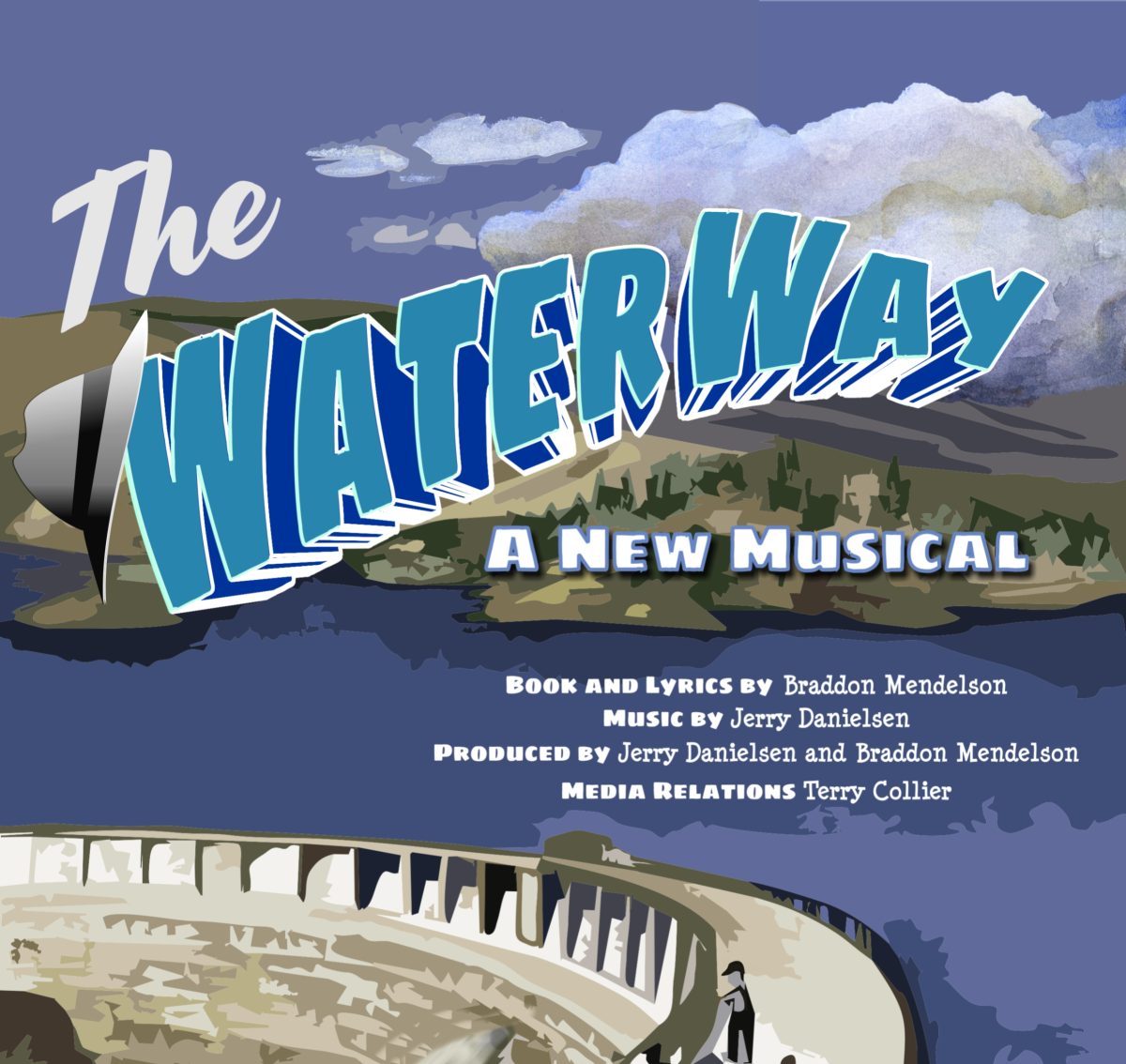
About the Show
The delivery of water to Los Angeles at the turn of the 20th century gives rise to one of the greatest cities in the world.
In The Water Way musical, the transformation of Los Angeles from humble Spanish pueblo to one of the largest metropolitan centers in the world is recounted from the perspective of its first resident, the L.A. River, along with the oligarchs and public officials who develop and nurture this erstwhile arid desert. Through real estate speculation, businessmen such as railroad tycoons Moses Sherman and Henry Huntington coax an ambitious nation to move west, while L.A. Times publisher General Harrison Grey Otis and his son-in-law Harry Chandler use the power of the press to sculpt public opinion in favor of a 233-mile aqueduct.
Despite competing self-interests, dubious motivations, and the deadly collapse of the St. Francis Dam, the determination of Irish immigrant William Mulholland and native son Fred Eaton to bring faraway water to a parched population empowers the City of the Angels to ascend.
This is their story, as well as it is ours
The PBS Documentaries
About the Story
“From the Owens River to Saugus to the San Fernando Valley, it’s all downhill…”
1877. Los Angeles is a town of 9000 inhabitants. William Mulholland, an Irish immigrant and adventure-seeker, arrives in the small pueblo at the age of 21 without a dime to his name. But his voracious appetite for books and his self-education in hydraulic engineering result in his promotion from lowly ditch tender to Superintendent of the Department of Water and Power.
Although only a few weeks older, Frederick Eaton — the supervisor at the privately owned water company and allegedly the sixth Anglo to be born in Los Angeles — hires Mulholland to clear debris from the Zanja Madre. This “Mother Ditch” is a 90 mile long trench through which water is distributed from the Los Angeles River to the residents, via small tributaries, or “zanjas,” carrying the exposed and generally unhealthy water to residents and farmers.
Together, the friendship of Eaton and Mulholland creates one of the largest and most enduring engineering feats in the world.
To fight an expansive drought and satisfy the needs of an ever-expanding population, Mulholland and Eaton devise a plan to build a 233 mile aqueduct to bring water from the Owens Valley. Mulholland engineers and supervises the project, bringing the 24 million dollar waterway to completion on time and under budget. Owens Valley farmers, however, feeling duped into selling their property to the city, try everything they can to stop this “water grab” — including violence. Thus begins one of the longest running civil disputes in history.
1928. The storied career of William Mulholland, now in his late seventies, ends in dishonor after the collapse of The St. Francis Dam — the largest civil engineering catastrophe in California — which kills hundreds.
Amid tragedy and redemption, humor, and song, audiences will travel back through history to witness the making of a city.
About My Story
by Braddon Mendelson
In 1999, when I moved to Stevenson Ranch, an unincorporated area of Los Angeles County located at the west end of the Santa Clarita Valley, the story of the St. Francis Dam immediately grabbed my imagination. I was soon on my first journey to the dam site, which was 15 miles north of where I had just relocated.
Upon arrival at the ruins, I saw huge blocks of broken concrete and bent rebar poking out of the weeds and dirt, the trickling San Francisquito Creek winding through and around them. When I looked upstream, I could view the ravine through which the current road journeyed north, but which at one time was a reservoir containing 14 billion gallons of water, held back by a 205-foot high concrete gravity dam.
Considered the worst civil engineering disaster of the 20th century, I wondered why more people didn’t know about this significant, albeit tragic, part of our history.
I wanted to learn as much as I could about the disaster and began reading and researching. I was hooked. One day, I got lucky. I had the privilege to dine with Dr. J. David Rogers, one of the foremost forensic geologists in the world. He had written extensively about the physics of the St. Francis Dam and the forces at work which led to its collapse. He had ascertained how these hundreds of tons of concrete broke apart and why. In addition to imparting his scientific research, he regaled me with stories of the victims and heroes, from the night it gave way, just before midnight on March 12, 1928.
I wanted to convey the story of the St. Francis Dam in the context of the development of Los Angeles and its water system. Several books on the subject have been published in recent years, and I devoured all of them. I also made extensive use of the Los Angeles Times online archives, which provided historical subtext.
About two years ago, on a family trip to Cabo San Lucas, I decided It was time to put it all together. Combining my love of Broadway musicals, my background as a script writer, and my lifelong desire to write a musical, I dug in my heels and began writing the book and lyrics. My good friend Jerry Danielsen, a brilliant composer and musician who can play (honest to god) any instrument under the sun, agreed to write the music.
BIOS
Braddon Mendelson
Book and Lyrics
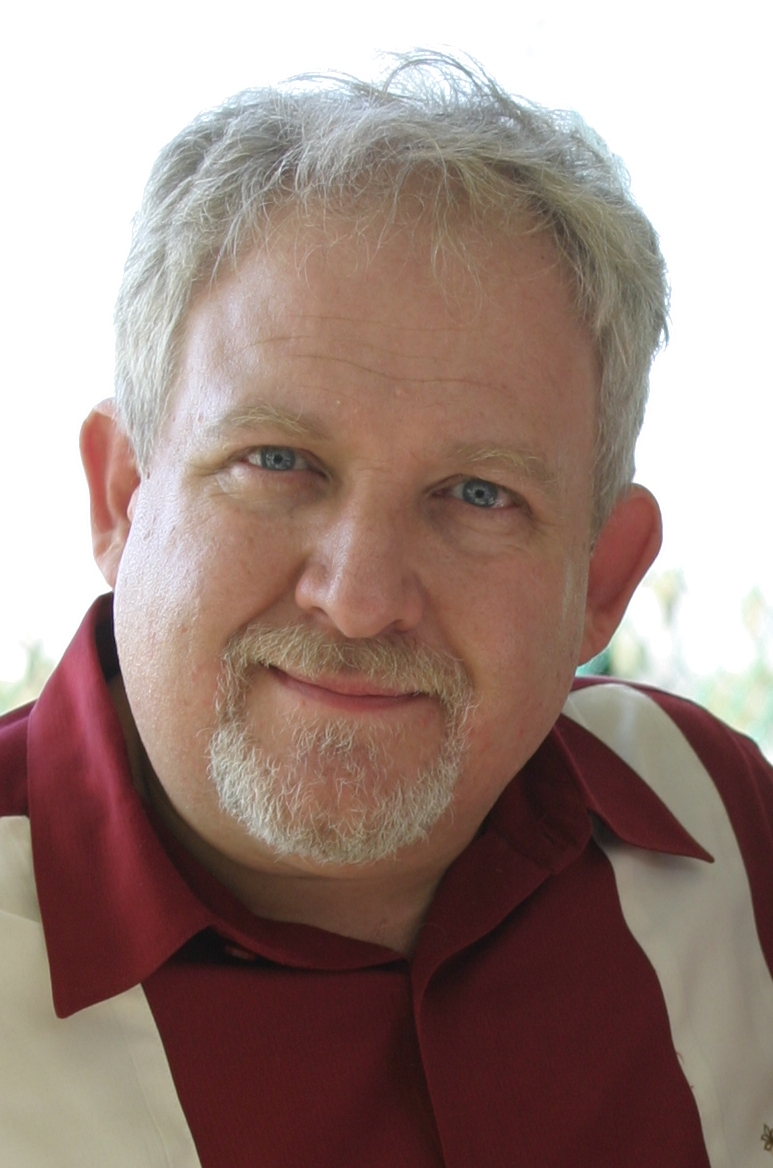 After graduating from California State University, Northridge with a degree in TV and Film, Braddon began his career in television, operating the teleprompter on the Academy Award and Emmy Award telecasts. He has gone on to produce several independent feature films, including the cult classic Boogie Boy.
After graduating from California State University, Northridge with a degree in TV and Film, Braddon began his career in television, operating the teleprompter on the Academy Award and Emmy Award telecasts. He has gone on to produce several independent feature films, including the cult classic Boogie Boy.
On the Internet, Braddon has created a diverse and multi-genre body of work, including CineVerses, an award-winning video series he produces with his “WaterWay” collaborator, composer/poet Jerry Danielsen, and Read Me a Story, where children’s books come to life with animation, effects, and music.
He was a writer for Sony Television International’s sitcom Ritas Welt (“Rita’s World”), and has produced and/or directed award winning music videos for a variety of top recording artists.
His work in live theater includes directing the Radio Television News Association’s annual Golden Mike Awards, The Riot Act at the Hollywood Playhouse, and Melodic Cuisine — a multimedia show replete with music and effects.
The Water Way marks his first foray into musical theater, a genre that he has loved since childhood.
Jerry Danielsen
Music
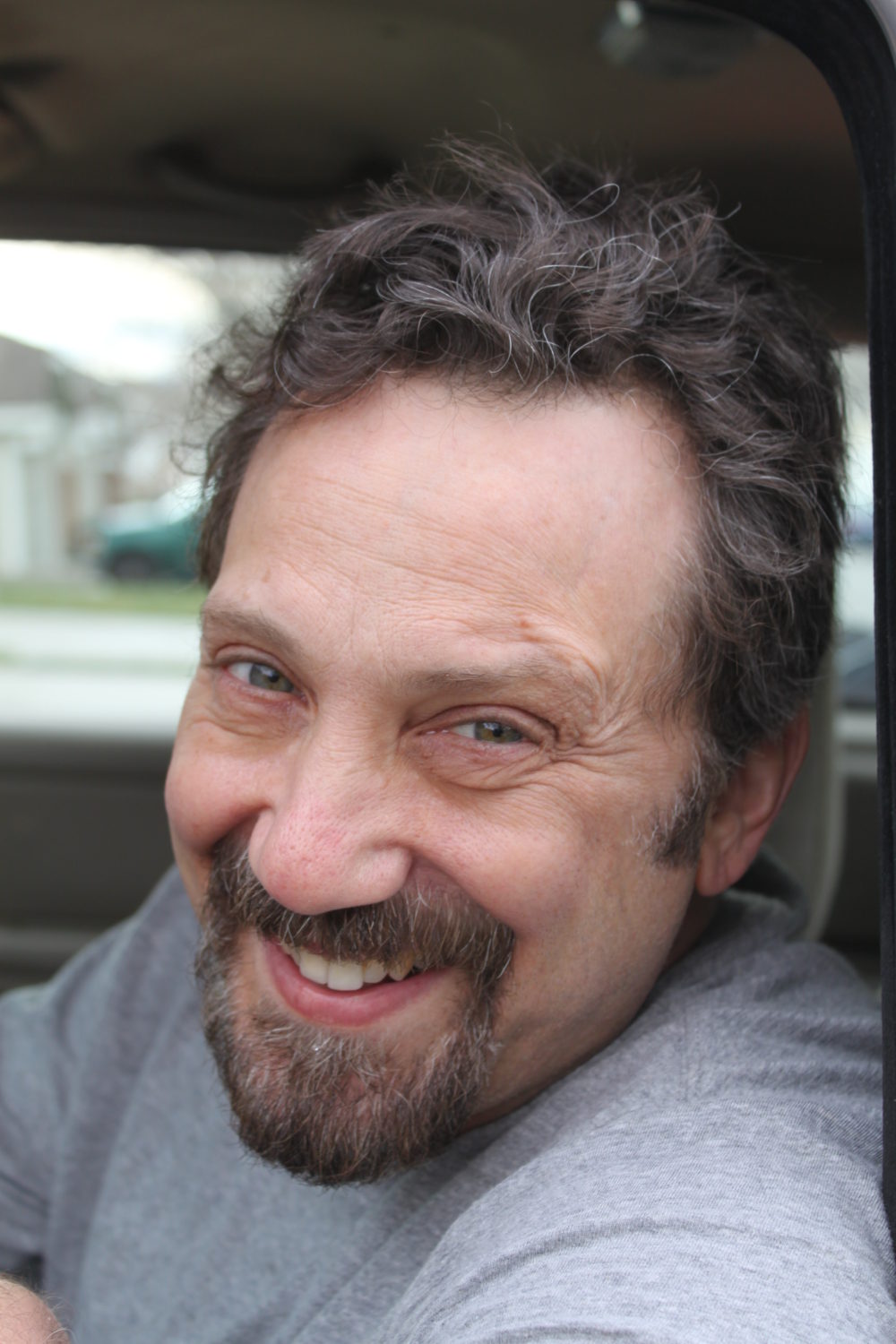
Jerry Danielsen is a composer, producer, sound designer, recording engineer, writer and filmmaker.
He is also the owner operator of Busy Signal Studios, where he coordinates and produces his original music for films, TV and theater.
A graduate of California Institute of the Arts and College of the Canyons, Jerry has worked extensively as a studio musician-arranger and recorded and performed his music with Grammy winners and gold record artists.
In addition, he has extensive experience composing music for contemporary classical works, jazz, commercial, experimental, as well as music for electronic instruments and traditional ensembles.
He composed the music for Steambath Blues, a musical that premiered in 2019. He is excited to be working on the songs for The Water Way.
He is also the author of several books of poetry and vignettes.
Contribute
Donate
Art has always worked hand-in-hand with history as a way to explore important events and provide context to them that may otherwise pass unknown.
Learning the story of how water was brought to the arid pueblo of Los Angeles helps us understand its rise as one of the world’s great metropolises. It puts front and center the people who made it happen, giving us empathy for their motivations and internal drives.
Moreover, it affords insights to the residents of Santa Clarita, Castaic, Santa Paula, Fillmore, Ventura, the San Fernando Valley, and the Owens Valley, whose predecessors were deeply affected by these events; particularly, the building of the Los Angeles Aqueduct and the collapse of the St. Francis Dam.
You can help bring this great California story to the stage with your donation, small or large. Every dollar of your contribution will go toward the production of “The WaterWay” musical and add to a further understanding of California’s story.
